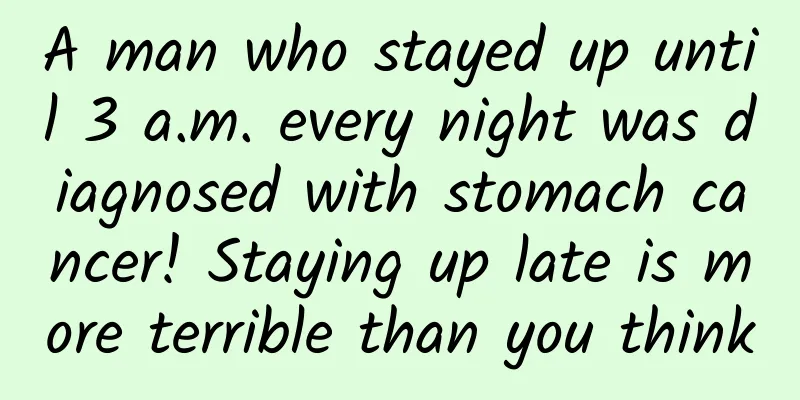Symptoms of left lumbar nephritis in women

|
If a woman has nephritis, she must be careful in her life. Kidney disease has a great impact on human health. If you don't pay attention to good treatment, it will easily lead to chronic nephritis, which will have a greater impact on kidney function and may even easily cause kidney failure. Therefore, if kidney disease occurs, you must check in time to understand the specific cause and carry out good treatment. In daily life, you should pay attention to diet and take good care of yourself.
The first type: hypoproteinemia. Patients with nephritis lose a large amount of albumin in their bodies, and their serum albumin levels are mostly below 30g/l, so hypoproteinemia is very likely to occur at this time. The second type: Hyperlipidemia nephritis patients have abnormal lipid metabolism, which leads to an increase in almost all lipoprotein components in the patient's plasma, with a significant increase in plasma total cholesterol and low-density lipoprotein cholesterol, and an increase in triglycerides and very low-density lipoprotein cholesterol. The third type: massive proteinuria. The appearance of massive proteinuria symptoms is one of the reliable indicators for diagnosing nephritis. The last type: severe edema. Patients with different types of nephritis, including nephritis, primary nephritis, etc., almost all nephritis patients may have varying degrees of edema clinically, and the edema is most obvious in the face, lower limbs, and scrotum. Edema in the body of patients with nephritis may last for weeks or months, or may occur throughout the disease with swelling coming and going. When patients encounter infection (especially streptococcal infection), edema often recurs or worsens, and even azotemia may occur.
The principles of treatment include removal of the predisposing factors, general treatment, treatment targeting the cause and pathogenesis, treatment of comorbidities and complications, and renal replacement therapy. 1. General treatment This includes avoiding fatigue, eliminating triggers such as infection, avoiding contact with nephrotoxic drugs or poisons, adopting a healthy lifestyle (such as quitting smoking, exercising moderately, and controlling emotions), and a reasonable diet. During the acute phase, you should rest in bed and gradually increase your activity after the clinical symptoms improve. A low-salt diet (less than 3g per day) should be given during the acute phase. People with normal renal function do not need to limit protein intake, but in cases of azotemia, protein intake should be limited, and high-quality animal protein should be the main source. People with oliguria should limit their fluid intake.
Treatment targeting the immune pathogenesis often includes glucocorticoids and immunosuppressants. Blood purification treatments such as plasma exchange and immunoadsorption can effectively remove autoantibodies and antigen-antibody complexes from the body. Treatment targeting non-immune pathogenesis, including hypertension, hyperlipidemia, hyperglycemia, hyperuricemia, obesity, proteinuria, intrarenal hypercoagulable state, renin-angiotensin system activation, and oxidative stress. Renin-angiotensin system blockers, such as ACEI/ARB, are one of the most important therapeutic measures to slow the progression of kidney disease. 3. Treatment of comorbidities and complications Patients with kidney disease often have multiple comorbidities, such as metabolic abnormalities, hypertension, coronary heart disease, heart failure and cirrhosis, which may aggravate the progression of kidney disease and should be actively treated. Complications of kidney disease may involve various systems, such as infection, abnormal coagulation function, renal hypertension, renal anemia, renal osteodystrophy, water, electrolyte and acid-base imbalance, acute left heart failure, pulmonary edema and uremic encephalopathy, and should be treated actively. |
<<: Can drinking boiled water from Hedyotis diffusa cure gynecological inflammation?
>>: Pelvic fluid accumulation of 19 cm but no inflammation
Recommend
Is it accurate to determine the gender of a baby by ultrasound at 16 weeks of pregnancy?
At 16 weeks of pregnancy, it is already the fourt...
Does scraping have any effect on pregnancy?
Gua Sha can help the body's blood circulation...
Ovulation test paper positive
Ovulation test strips are a tool used to detect w...
Data interpretation: Does Samsung still have a chance to turn things around?
Samsung Electronics released its preliminary thir...
What to do if you have threatened miscarriage
Many women always experience symptoms of threaten...
Is it easy for the uterus to be anterior and the placenta to be previa?
There is no relationship between anteverted uteru...
What to do if a woman has low back pain
Low back pain is a disease that has occurred in e...
How many weeks of pregnancy is suitable for 4D color Doppler ultrasound
Between 20 and 24 weeks of pregnancy, a four-dime...
What should I do if my period doesn’t come at 35?
Menstruation is a unique reaction of the female b...
What is breast enlargement?
All women probably hope that their breasts can be...
38 weeks fetal amniotic fluid standard
The presence of amniotic fluid can create a healt...
What is the best thing to eat after giving birth?
In daily life, many women are weak after giving b...
What is the reason why the follicle does not ovulate?
Anovulation makes many female friends who are pre...
Darkening of the inner thighs of women
The main reason why the inner side of the skin be...
What are the symptoms of vulvar itching?
Vulvar itching is a very common disease in daily ...









